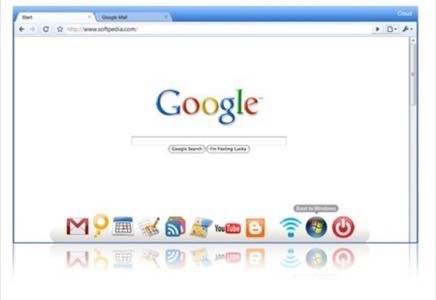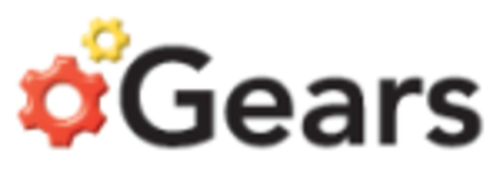Before the term “cloud computing” became a throwaway word used to describe everything from web mail to Facebook, people were dreaming of a day when the OS would disappear and everything we needed would run from the cloud. Fast-forward to 2008, and we can tentatively say that the moment has arrived…well, almost. A company called Good OS(yes, the same company behind the failed Linux-based Everex desktops introduced last year) has introduced new software called Cloud which boots a computer directly into a customized Chrome-like web browser. Now that this cloud OS has arrived we have to wonder: is this really what we wanted?

Introducing Cloud, the OS that Runs in the Browser
With Cloud, there is no desktop. You turn on your computer and it boots up to a Google Chrome web browser page which includes a dock of application shortcuts similar to what you would see on an Apple PC. Introduced at the recent Netbook World Summit in Paris, this simplified “OS” is an ideal install for the new ultraportable notebook computers called “netbooks,” according to the company, as it is both fast and lightweight. It really is a true netbook, after all – it embodies the name in a way that none of the other netbook operating systems do.

However, unlike the various Linux-based netbook operating systems out there, including Good OS’s failed “gOs” that was installed on the now-discontinued gPCs, Cloud OS does not intend to replace Windows. Instead, it runs alongside it. Presenting a hybrid approach to computing, Cloud gives you quick access to a number of web apps directly from the dock, including Google’s Gmail, Calendar, Maps, Docs, Blogger, and YouTube, which you can launch alongside other rich client applications like Skype.
When you need to do heavier lifting, which on a netbook probably means running Microsoft Office, you can switch over to Windows or whatever OS may be running. (Cloud is compatible with all operating systems, says Good OS).
Cloud: OS or PXE?
If Cloud was installed on a traditional laptop or desktop, on the other hand, it would be akin to the Preboot Execution Environments (PXEs) installed on consumers PCs. It is in these PXEs that we may initially test the waters of a cloud OS’s potential. Take for example Dell’s forthcoming Latitude ON: a Linux-based system-on-a-chip that consists of a low-power ARM processor and flash memory running independently of the laptop’s CPU and hard disk drive. With it, you’ll be able to launch a Firefox-based browser, web mail, calendar, and contacts application as well as a Microsoft Office and PDF viewer. Cloud OS is merely an alternative to that software, albeit without the Microsoft Office/PDF support.
But is a PXE really the Cloud OS of our dreams? In our imaginations, at least, there was no app that still required the computing power of the desktop. Is that ever going to be a reality?
Do We Really Want or Need a Cloud OS?
Today’s computer users may not need to run as many desktop applications as they did in the past, but there are still several apps whose cloud versions exist only as lightweight counterparts to the real deal. Adobe’s Photoshop is a great example of this – although there are several web based photo-editing apps, most would argue that they don’t compare in either features or richness to their desktop counterpart. Then there is, of course, the staple: Microsoft Office. It will soon come in a web-flavored version called Microsoft Office Web Applications, but will it really replace the desktop software entirely? Even more, do we want it to?
As we transition to the cloud, we’re seeing more attempts at merging the online and offline worlds. Adobe gave us AIR apps, which can be designed to run in offline mode, syncing data back to their various motherships when your internet connection returns. Google delivered Google Gears, a simple yet somewhat clunky implementation that takes web apps offline. Why clunky? Gears doesn’t automatically detect a lost connection, you see. (Switch off your Wi-Fi and see what Google Reader does. Oops, an error occurred, it will say.) Instead, using Gears means you must first click the provided button or link which saves the data to your computer for offline viewing. If it wasn’t for the syncing it offered, this wouldn’t be much more of an improvement over the good ol’ “make this web page available offline” trick.

The Drawback to the Cloud OS: An Offline World
So far, these hybrid approaches to dealing with the cloud seem to imply that we’re not entirely ready for a complete transition. Internet is not everywhere yet, unfortunately. So where does that leave our hopes for a true cloud OS? Do we first need ubiquitous broadband and Wi-Fi before a cloud OS can become a reality? Or will we one day surf a free second internet provided by Google? Is Google right now perfecting a hybrid OS in secret? Whatever the case, despite its name, Cloud OS doesn’t feel like like the cloud-based OS we dreamed of, but it may be a good first step in that direction.





















